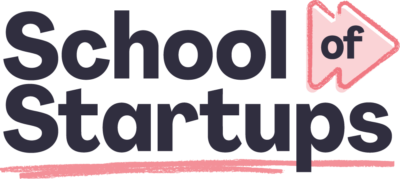What are the Cashflow Forecasting Best Practices for Modern Businesses?
Oct 2025
Key Highlights
- Effective cash flow forecasting starts with clear objectives and accurate financial data.
- Automating data collection and using rolling forecasts can significantly improve your cash flow management.
- Choosing the right software is crucial for turning complex data into actionable insights.
- Regularly reviewing your forecasts and conducting scenario analysis is essential for agile financial planning.
- The 13-week forecast is a popular model for balancing short-term accuracy and strategic visibility.
- Successful cash forecasting helps you avoid common mistakes and stay on top of your cash flow.
Running out of cash is the fastest way even a promising startup can fail. You might be landing clients, generating revenue, or turning a profit, but without a clear view of incoming and outgoing money, one unexpected expense can throw everything off balance.
That’s where cash flow forecasting comes in. It gives business leaders reliable visibility, helping them plan ahead, avoid surprises, and make smarter financial decisions.
In this blog, we’ll explore some cashflow forecasting best practice that will help you improve accuracy, strengthen financial stability, and build a roadmap for sustainable growth.
What is Cashflow Forecasting?
Cash flow forecasting is the process of estimating the money moving in and out of your business over a specific time. A detailed cash flow forecast helps you anticipate your financial position, ensuring you have enough cash on hand to cover expenses, pay bills on time, and avoid disruptive shortages. It's a fundamental part of strategic financial planning for any business.
For example, imagine you are a startup. Cash flow forecasting estimates money moving in and out of your business, helping you spot crunches before they happen. For example, if your sales spike this month but investor funding arrives late, a forecast shows you whether you can cover payroll and bills on time.
How to Create a Cashflow Forecast?

Here are the different steps to creating a cash flow forecast and build an accurate picture of your company’s financial health:
- Step 1 (Define your forecast period): Decide the time frame you want to forecast, whether it is weekly, monthly, or quarterly. Shorter periods help spot liquidity gaps quickly, while longer ones support strategic planning.
- Step 2 (Identify all sources of incoming cash): List every stream of income, such as sales revenue, loan proceeds, grants, or investment returns. Make sure you account for both recurring and one-time inflows.
- Step 3 (List your expected outflows): Record your business expenses, including payroll, rent, utilities, supplier payments, taxes, and loan repayments. These are the core elements that determine how much cash you will have left.
- Step 4 (Project your figures over time): Use your income and expenses to estimate your net cash position across the forecast period. This projection helps you anticipate cash surpluses or shortfalls in advance.
- Step 5 (Monitor and update regularly): A forecast is only valuable if it stays accurate. Review it frequently, compare it with actuals, and update it as circumstances change. Regular updates ensure your forecast reflects real-time business performance.
What are the Top Cashflow Forecasting Best Practices for UK Businesses?
For businesses in the UK, navigating economic shifts, currency volatility, and late payment cultures makes effective cash flow management more critical than ever. Simply hoping for the best cash flow isn't a strategy; you need a proactive approach. Here are some best practices you can follow:
1. Always Establish Clear Cashflow Forecasting Objectives First
Your objectives of cash flow forecasting will shape the entire process, from the level of detail required to the time frame you analyse. This is one of the most essential tips to follow while creating an effective forecast. Here are some common objectives:
- Manage short-term liquidity to ensure you can cover payroll and rent next month
- Support long-term financial planning, like securing a loan for expansion
- Improve working capital management
- Assess the impact of a new product launch
Defining these goals upfront helps you focus your efforts and ensures you generate relevant cash flow insights.
2. Work with Accurate and Comprehensive Financial Data
A forecast is only as reliable as the information it’s built on. Using inaccurate or incomplete financial data will lead to flawed projections, undermining your decision-making process. To build a trustworthy forecast, you need to gather comprehensive and precise cash flow data from across your business.
Always start with your historical data, as it provides a baseline for future trends. Then, collect current information on all expected cash movements. This includes:
- Cash Inflows: Sales revenue, customer payments, loans, and investment income.
- Cash Outflows: Supplier payments, payroll, rent, taxes, and loan repayments.
By focusing on high-quality data, you create a solid foundation for your cash flow analysis. This data-driven approach moves you away from guesswork and toward a more accurate understanding of your financial health.
3. Utilise Rolling Forecasts for Greater Flexibility
Moving away from static plans is another idea. Unlike a static forecast, which is created once for a fixed period, rolling forecasts are continuously updated. As one month ends, another is added to the forecast, giving you a consistent and current view of your financial future. This dynamic approach provides much greater agility.
Imagine a sudden drop in customer demand. With a static cash flow forecast, you might not adjust your projections until the next quarter, leaving you unprepared for a potential cash squeeze. A rolling forecast, however, allows you to immediately incorporate this new information and understand its impact on your liquidity.
4. Automate Data Collection and Reporting Processes
Many businesses still rely on spreadsheets for their cash flow forecasting, but this manual process is often slow and prone to human error. Spending hours collecting and manipulating data leaves little time for what truly matters: analysing the results to learn about your business. This is where you should automate your processes.
Automating data collection and financial reporting can be a game-changer. By using accounting software or specialised tools that integrate directly with your ERP systems and bank accounts, you can pull in accurate data automatically. This dramatically reduces the time spent building reports and all but eliminates the risk of manual errors.
As Ben Stilwell, CFO of Peak Toolworks, noted, after automating their process,
"We have a cash forecast complete by the end of the first business day of the week, versus the 4th day, and we are 100% sure of the accuracy.”
5. Set Forecast Periods That Align with Business Needs
A short-term cash flow forecast of a few weeks is ideal for managing daily liquidity, while a long-term forecast of over a year is better suited for strategic financial planning and securing investments.
For many business owners, the 13-week forecast strikes the perfect balance. This specific period is long enough to provide strategic visibility for making important decisions but short enough to maintain a high degree of accuracy. It gives you enough runway to identify potential cash shortages months in advance, allowing you to arrange financing or adjust spending without creating a crisis.
6. Incorporate Scenario Planning and Sensitivity Analysis
The real world is unpredictable, and relying on a single forecast can leave you vulnerable. This is where scenario planning and sensitivity analysis become invaluable tools for effective risk management.
Instead of creating just one projection, build multiple scenarios to see how your cash flow would hold up under different conditions. This helps you understand your financial resilience and develop contingency plans before you need them. What would happen to your cash position if certain events occurred? Consider testing scenarios such as:
- A major customer paying 60 days late
- A sudden 20% drop in sales
- An unexpected increase in supplier costs
- A best-case scenario where sales exceed expectations
By modeling these possibilities, you can identify potential weaknesses in your cash flow and make proactive adjustments.
Bonus Tip: Select the Right Software for Real Time Cashflow Forecasting

Choosing the right cash flow forecasting tools is another useful tip for achieving the best outcomes in your cash flow forecasting process. While basic spreadsheets can work for very simple businesses, dedicated software offers powerful features like automation, real-time data integration, and advanced analytics.
Here are some key steps to follow if you want to arrive at the right solution for real time cashflow forecasting:
- Step 1 (Assess your business needs): Identify what you need from the tool, whether it’s simple cash tracking, multi-entity consolidation, or advanced forecasting.
- Step 2(Look for real-time data integration): Ensure the software connects seamlessly with your accounting, banking, and ERP systems to provide up-to-date forecasts.
- Step 3 (Check automation capabilities): Opt for tools that reduce manual input through automation, such as automatic data imports, recurring transaction recognition, and smart reconciliation.
- Step 4 (Evaluate reporting and analytics features): Good software should offer clear dashboards, scenario modeling, and customisable reports to support decision-making.
- Step 5(Consider scalability): Pick a solution that can grow with your business and handle increased data, more users, or international operations.
- Step 6(Test usability and support): Choose software that is intuitive for your team and backed by reliable customer support and training resources.
What are Some Common Mistakes to Avoid in Cash Flow Forecasting?
Even with the best intentions, it's easy to fall into common traps that can make your cash flow forecasting less effective. Here are some common mistakes to avoid in cash flow forecasting:
1. Relying too heavily on historical data without factoring in changes
Many businesses simply project past cash flows into the future without adjusting for changing market conditions, customer behavior, or business growth.
This approach ignores seasonality, economic fluctuations, or one-off events that can significantly impact inflows and outflows. Forecasts that don’t account for evolving realities quickly become outdated and misleading.
2. Overestimating revenues or underestimating expenses
A common mistake is being overly optimistic about future sales or downplaying the costs of operations. Overestimating cash inflows creates a false sense of security, while underestimating cash outflows leaves you unprepared for the actual demands on liquidity.
Both mistakes can result in a dangerous gap between expected and actual cash positions.
3. Ignoring timing differences in cash movements
Businesses often fail to recognise that recorded sales don’t always translate into immediate cash. For example, customers might take longer than expected to pay invoices, while expenses like rent, utilities, or supplier payments have fixed due dates.
Failing to reflect these timing mismatches can make forecasts look healthy on paper but leave you short on actual cash.
4. Leaving out irregular or one-off expenses
Businesses sometimes forget to include occasional costs like tax payments, equipment purchases, loan repayments, or annual subscriptions.
While these may not appear in every monthly cycle, they can significantly disrupt cash flow when they arise. Excluding such items from forecasts creates blind spots that often result in unpleasant financial surprises.
5. Failing to integrate forecasts with broader financial planning
Cashflow forecasts are often prepared in isolation. In other words, they are not linked to budgets, business plans, or financing requirements. This siloed approach prevents businesses from seeing the bigger picture.
A lack of integration makes it difficult to align resources with long-term goals, leading to mismatches between liquidity and growth ambitions.
How Accountancy Cloud can Help with your Cash Flow Forecasting Needs?
At Accountancy Cloud, we help you build cash flow forecasts that give clarity and hold you steady through growth. We guide you to gather accurate financial data, including past inflows and outflows, sales forecasts, projected expenses, and use that as the foundation for your forecast.
Our accountants show you how to model different scenarios, whether it’s growth, downturn, or conservative planning. We also emphasise real-time tracking of cash flow against your forecast so you can spot shortfalls early and adjust plans accordingly.
Stay ahead of challenges, plan with confidence, and focus on scaling your business. Speak to our team today.
Conclusion
Mastering cash flow forecasting is not just about crunching numbers. It’s about giving your business the clarity and control it needs to grow sustainably. By following best practices like setting realistic assumptions, regularly updating your forecasts, and leveraging the right tools, you’ll avoid costly surprises and stay financially resilient. The stronger your forecasting discipline, the better equipped you are to make confident decisions that fuel long-term success.
Frequently Asked Questions
What data do I need to prepare a reliable cash flow forecast?
Start with historical data from your accounting software on sales and expenses. Also, gather current cash flow data, including accounts receivable and payable schedules, loan payment details, and expected payroll costs, to create a complete picture.
How often should cash flow forecasts be updated for the best results?
For accurate cash forecasts, business owners should update their cash flow forecasting reports regularly, ideally on a weekly or monthly basis. This ensures your financial reporting reflects current conditions.
What are some cash flow forecasting best practices for small businesses?
For a small business, simplicity is key in cash flow forecasting. Start with a 13-week forecast, use reliable data, and update it weekly. Automate where you can. Don't hesitate to consult with Accountancy Cloud to refine your cash flow planning.
What tools or software can assist in creating a cash flow forecast?
You can start with Microsoft Excel for basic cash flow forecasting. However, dedicated accounting software and ERP systems offer more robust features. Modern tools often use automation and even machine learning to provide real-time, accurate forecasts.
Can you compare popular cashflow forecasting tools and their pros and cons?
Popular cash flow forecasting tools are Float, Futrli, and Fathom. Float offers real-time insights but may lack advanced analytics. Futrli provides powerful scenario planning, but it can feel complex for beginners. Fathom excels at KPI tracking, but it’s more expensive.
How long should a cashflow forecast be?
Typically, forecasts cover 12 months for planning, with weekly or monthly granularity. Shorter periods help track immediate needs, while longer forecasts guide strategic decisions and funding requirements.
What are the consequences of incorrect cashflow forecasting?
Inaccurate forecasts can lead to missed payments, overdrafts, stalled growth, and poor financial decisions, putting the business at risk of liquidity shortages or even insolvency.

Educational content just for startups. As a member, you’ll get unlimited access to an extensive range of guides, blogs and advice to help you run and grow your business.


